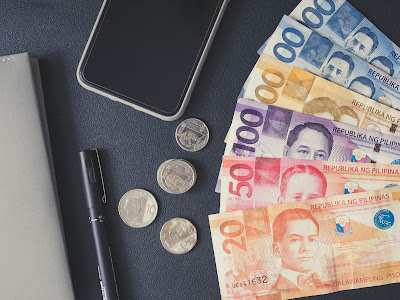Philippine Currency
The Philippine currency, known as the Philippine Peso (PHP), holds a significant place in the hearts and minds of the Filipino people. Beyond its monetary value, the currency represents the resilience, history, and cultural heritage of the Filipino nation. This article explores how the Filipino people handle their currency, highlighting its importance in daily life, its design elements, and its role in preserving a sense of national identity.
1. The Currency's Importance in Daily Life:
The Philippine currency plays a vital role in the daily lives of Filipinos. From buying groceries to paying bills, the peso is the primary medium of exchange for goods and services. It symbolizes the value of hard work, perseverance, and the pursuit of economic stability. Filipinos handle their currency with care and respect, recognizing its significance in sustaining their livelihoods and providing for their families.
2. Design Elements Reflecting Filipino Culture:
The Philippine peso banknotes showcase design elements that reflect the rich cultural heritage of the Philippines. Each denomination features iconic Filipino heroes, historical landmarks, and natural wonders. For example, the 1000-peso bill highlights the image of Jose Rizal, a national hero, while the 500-peso bill showcases the Tubbataha Reefs Natural Park, a UNESCO World Heritage Site. These design elements not only celebrate Filipino pride but also serve as educational tools, introducing Filipinos to their history and cultural treasures.
3. Preserving National Identity:
The Philippine currency acts as a symbol of national identity, reinforcing the Filipino people's sense of pride and unity. The use of Filipino languages, such as Filipino and English, on the banknotes reflects the country's linguistic diversity. The inclusion of indigenous flora and fauna on the currency highlights the nation's natural beauty and biodiversity. By handling and using their currency daily, Filipinos are reminded of their shared heritage and the importance of preserving their cultural identity.
4. Security Features and Counterfeit Prevention:
To protect the integrity of the currency, the Bangko Sentral ng Pilipinas (BSP) continuously enhances security features on Philippine banknotes. These features include embedded security threads, watermark portraits, and color-changing ink. By educating the public about these security features, the BSP aims to empower Filipinos to distinguish genuine currency from counterfeit bills. The vigilance and awareness of the Filipino people contribute to maintaining the integrity of the Philippine currency.
5. Evolving Currency Technology:
The Philippine currency has also evolved with advancements in technology. The introduction of polymer banknotes has improved durability and enhanced counterfeit resistance. Additionally, the BSP has embraced digital payment systems, promoting the use of electronic transactions and mobile banking. These technological advancements not only provide convenience but also reflect the adaptability and progressiveness of the Filipino people in the modern era.
The Philippine currency holds a special place in the hearts of Filipinos, representing their resilience, cultural heritage, and national identity.
Here are some examples of design elements on Philippine banknotes that celebrate Filipino cultural heritage:
1. The 1000-peso bill features the image of Jose Rizal, a national hero and a prominent figure in Philippine history. Rizal's portrait serves as a reminder of his contributions to the country's independence movement and his advocacy for social reform.
2. The 500-peso bill showcases the Tubbataha Reefs Natural Park, a UNESCO World Heritage Site located in the Sulu Sea. This design element highlights the Philippines' rich marine biodiversity and the importance of preserving its natural wonders.
3. The 200-peso bill features the image of the Taal Lake and the Taal Volcano, which is one of the country's most iconic landmarks. This design element represents the Philippines' unique geography and the beauty of its volcanic landscapes.
4. The 100-peso bill showcases the Mayon Volcano, known for its perfect cone shape and located in the province of Albay. This design element pays homage to the country's geological wonders and serves as a symbol of national pride.
5. The 50-peso bill features the Malacañang Palace, the official residence and workplace of the President of the Philippines. This design element represents the country's political history and the seat of power.
These design elements on Philippine banknotes not only celebrate Filipino cultural heritage but also serve as educational tools, introducing Filipinos to their history, natural wonders, and national symbols.
Hi Hello Please Support Us by Donating a Little its a Big Help to Us! Thank you
G-Cash +639552394832 and PayPal: Please Support Us






No comments:
Post a Comment